Corn snakes are a common sight throughout the southeastern United States. People often confuse corn snakes and copperheads due to their orange and red coloring, size, and shape. The truth is that corn snakes are mostly harmless to humans. In fact, when you look at what corn snakes eat, their presence is quite beneficial.
These snakes are found lingering in fields with tall vegetation, buildings, empty buildings, and forests. Like many snakes, they will run away if they detect a threat, like humans, but they are still a common sight.
The corn snake’s docile nature, gorgeous morphs, and large size make them a popular choice as pets, too. What do corn snakes eat? Discover the answers right here where we reveal what reptiles of the wild and domestic varieties tuck into regularly.
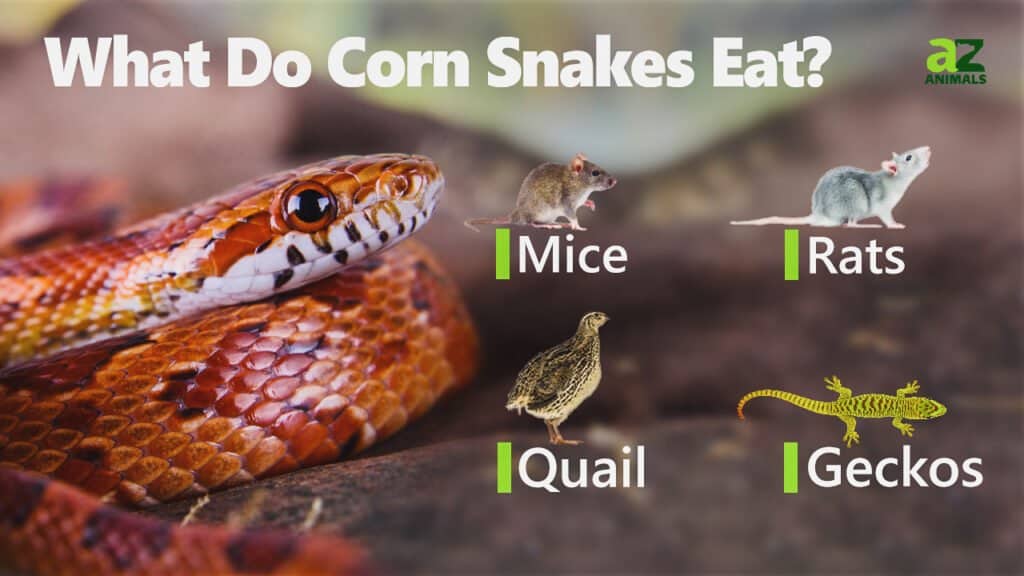
What Foods Do Corn Snakes Eat?

Corn snakes prefer to eat small mammals.
©Kurit afshen/Shutterstock.com
Corn snakes eat rodents as their primary source of food. They are carnivores that prefer eating small mammals that have a low chance of hurting them while feeding. These reptiles are often found near places where mice have made nests, like homes or farms. Unfortunately, that brings them into contact with humans who do not appreciate the corn snakes’ need to feed.
Of course, these snakes have to add some variety to their diet. Some of the other animals they eat include:
Corn snakes will enthusiastically hunt and eat all of these creatures. Unlike some other snakes, they have an aversion to eating insects.
However, it is important to realize that the snakes’ diet is limited by their size and the size of their prey. Young corn snakes might be too small to attack sizable rodents, for example.
How Do Corn Snakes Hunt Prey?
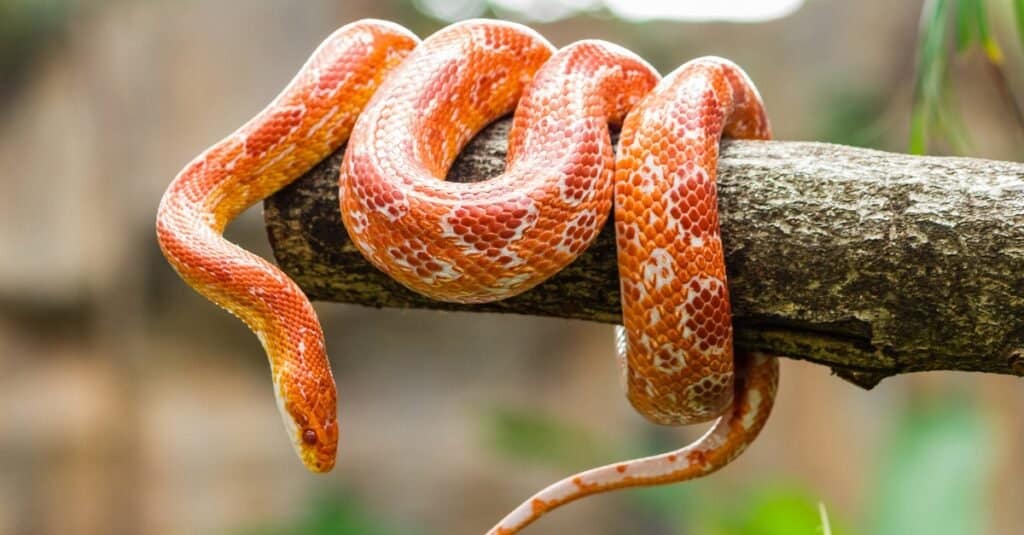
Corn snakes hunt prey during the day.
©iStock.com/bugphai
The reason that this reptile’s size matters when selecting prey is that the corn snake is not venomous. They cannot simply land a bite on an animal and wait for it to pass away. Instead, they are constrictors.
Corn snakes bite their prey and then wrap themselves around it. Once the snake has fully wrapped its body around its prey, it will slowly crush the animal to death before eating it.
Corn snakes are diurnal, so they are active mostly during the day. During that time, they search for prey using their incredible sense of smell that is bolstered by their Jacobson’s organ. This snake’s sense of smell makes up for its relatively poor sense of sight, allowing them to find meals almost entirely with that sense.
What Do Corn Snakes Eat in the Wild?
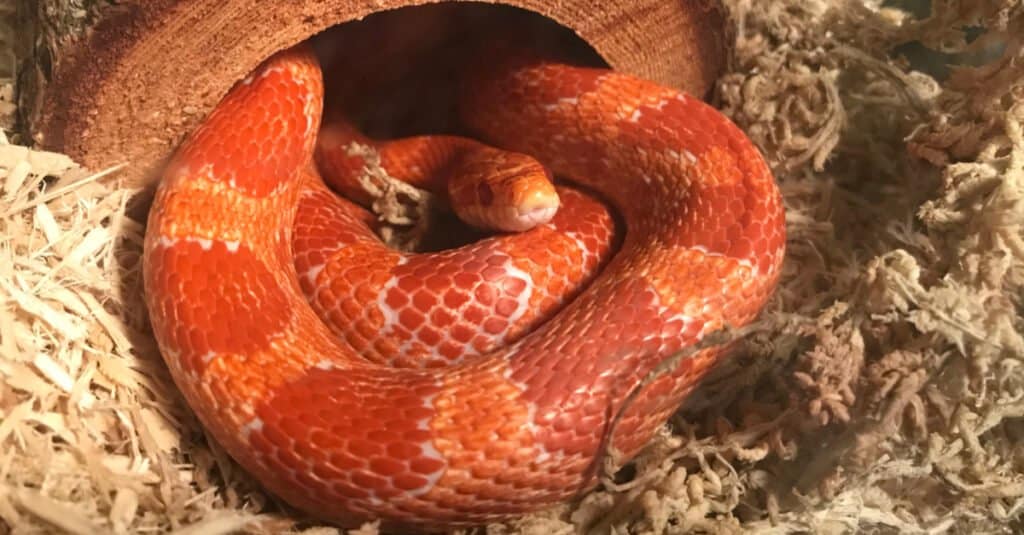
Corn snakes can be found under logs.
©Photohobbiest/Shutterstock.com
When corn snakes live in the wild, they eat mice, rats, squirrels, and other small mammals. At least, those are their primary and most common prey. They will hunt their prey using the methods we’ve described above.
They are opportunistic carnivores, so they have a tendency to eat whatever it is they happen to find. Corn snakes will expand their typical food selection when they cannot find rodents. If food is scarce, corn snakes could turn on others of their kind and consume them, especially if they are smaller.
Adult corn snakes need to eat every 10-14 days while juveniles need to eat roughly once a week. Thus, snakes can spend a fair amount of their active time hunting, but they only need a successful hunt every week or so to keep themselves well-fed.
What Do Corn Snakes Eat as Pets?
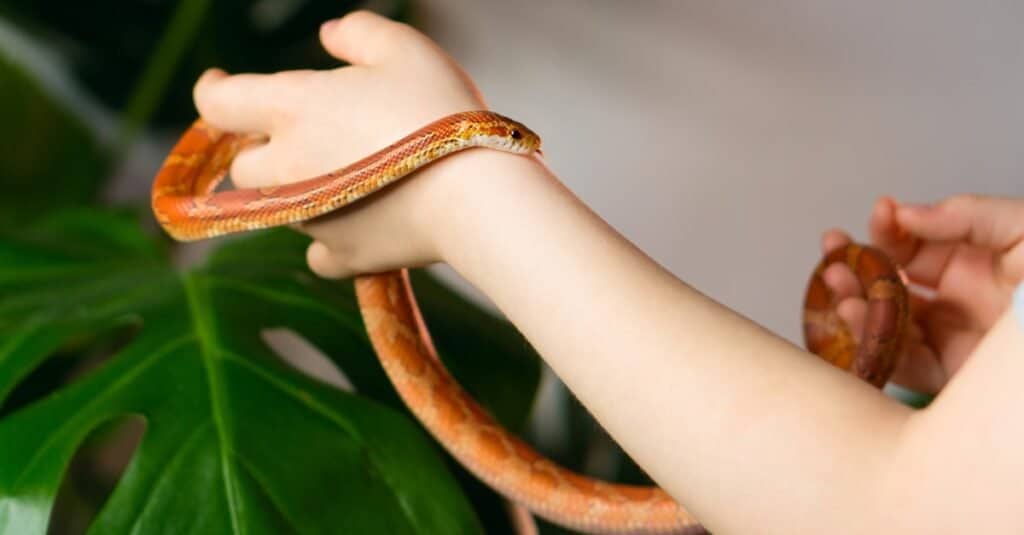
Corn
snakes make great docile pets
.
©iStock.com/Vagengeym_Elena
Corn snakes are frequently kept as pets, and their eating habits are different when they’re in captivity, especially if you get a young corn snake. If you have a pet snake, here is the frequency with which you must feed corn snakes at various ages:
- Hatchlings should be fed every 5-7 days.
- Juveniles should be fed every 7 days.
- Adults should be fed every 10-14 days.
Of course, these are only recommendations and you should consult an exotic animal vet to confirm this. Your snake’s activity level and size will come into play on the feeding schedule.
When you keep a corn snake as a pet, the most common food to feed them is mice, mimicking the food they tend to eat when hunting. The best practice for feeding your pet corn snake their meals is to use humanely killed frozen mice.
You can feed your snake live mice, but the problem is that these animals will fight back against your snake. Therefore, you have to consider two factors:
- Does your snake prefer live or frozen mice?
- Is your snake’s feeding response enthusiastic enough to overcome a mouse or rat without injury?
Also, you can’t feed your snake mice of the same size at every age. Food suppliers provide mice of many sizes, from pinkie mice for young snakes to jumbo mice for adults.
How Do You Know If a Corn Snake Is Hungry?
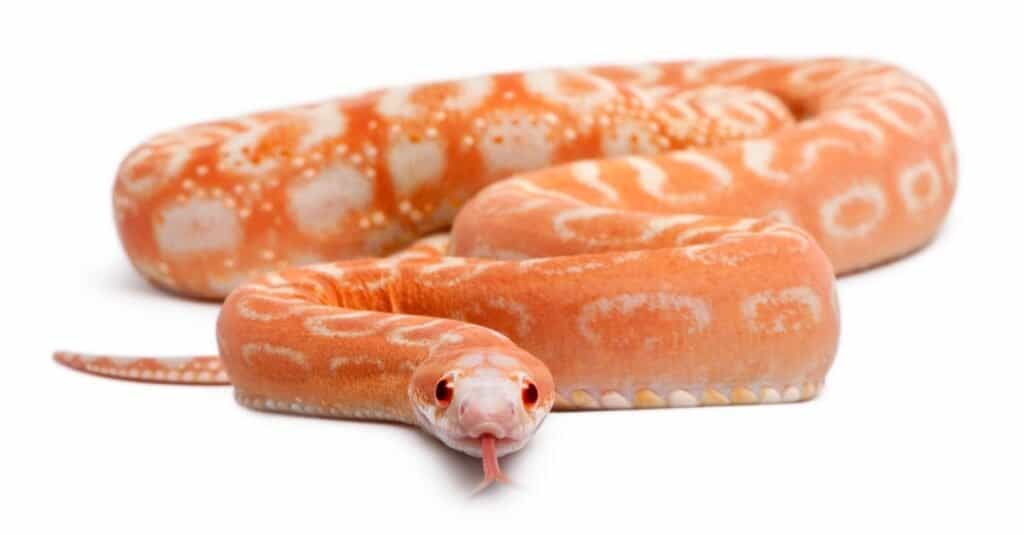
Increased tongue flicking could be a sign that your corn snake is hungry.
©iStock.com/GlobalP
Those who keep corn snakes as pets, especially first-time or new snake owners, might wonder how to tell if their snake needs more food.
There are several signs to look out for that can indicate your snake is hungry, including if it is:
- Flicking its tongue more often than it usually does: As snakes use their tongues to detect potential threats and prey, an increase in tongue flicking signals that their level of interest in possible food is higher.
- More interested in its owner: When a snake’s appetite is increasing, it develops more of an interest in movements around it as it becomes more alert, looking for potential prey.
- More active than usual: This is what would occur in the wild as snakes need to hunt when hungry, so a pet snake will move around in its enclosure looking for prey.
- Attempting to escape: Another indication that a snake is seeking out prey is if it tries to leave its enclosure to hunt for food.
- Acting aggressively: Like humans, snakes can sometimes get “hangry” if they are hungry and not able to eat. If your snake is more relaxed after being fed, then it’s most likely the aggressive behavior was due to hunger.
What Predators Eat Corn Snakes?
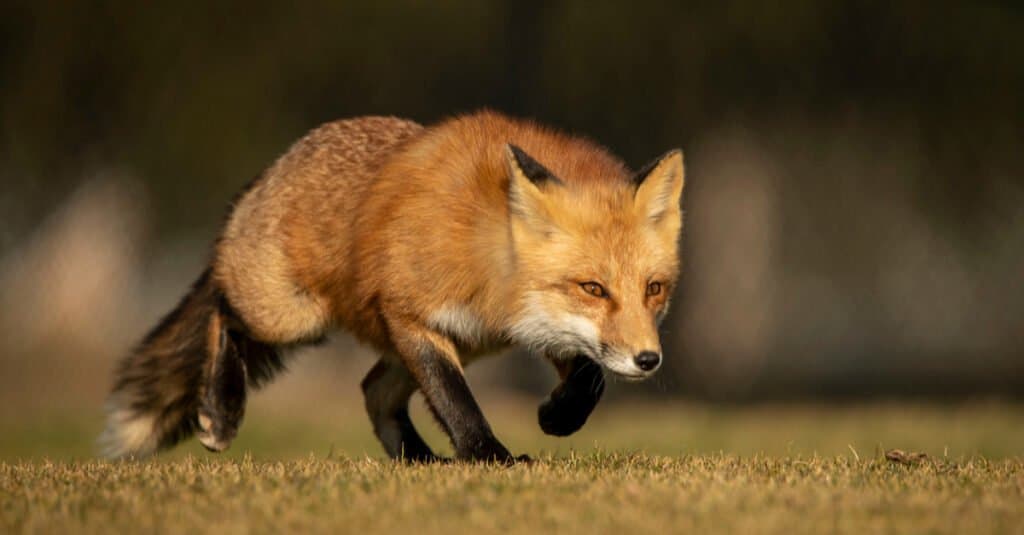
Foxes can hunt and kill corn snakes, especially the young.
©Jackie Connelly-Fornuff/Shutterstock.com
Corn snakes are effective hunters, but they do have some predators to watch out for. The most common predators of these reptiles are:
Each of these animals will hunt and kill corn snakes if they share the same range. They will especially feed on the younger, smaller snakes that are less capable of using their constriction countermeasures.
Unfortunately, these snakes are also frequently attacked by humans because they bear a strong resemblance to the copperhead snake. The copperhead is a venomous snake species that is responsible for most human bites each year. Upwards of 3,000 people are bitten by them each year, so many people kill corn snakes out of fear.
The better option would be to learn how to distinguish the snakes or to call professionals to relocate the snake instead of killing it right away.
The corn snake eats small mammals like mice, rats, and squirrels. Their keen sense of smell helps them find prey, and their constriction abilities make them very effective and careful predators. Although they look like copperheads, corn snakes are not venomous.
Although snakes can look scary to humans, corn snakes tend to stay out of the way and help reduce the population of disease-carrying pests. They are very beneficial to human communities.
Summary of 10 Foods Corn Snakes Eat
Here’s a recap of 10 foods that corn snakes consume.
| Number | Food |
|---|---|
| 1 | Birds |
| 2 | Mice |
| 3 | Squirrels |
| 4 | Lizards |
| 5 | Frogs |
| 6 | Smaller snakes |
| 7 | Bird eggs |
| 8 | Rats |
| 9 | Rabbits |
| 10 | Moles |
The photo featured at the top of this post is © Enrique Ramos/Shutterstock.com
Discover the "Monster" Snake 5X Bigger than an Anaconda
Every day A-Z Animals sends out some of the most incredible facts in the world from our free newsletter. Want to discover the 10 most beautiful snakes in the world, a "snake island" where you're never more than 3 feet from danger, or a "monster" snake 5X larger than an anaconda? Then sign up right now and you'll start receiving our daily newsletter absolutely free.
Thank you for reading! Have some feedback for us? Contact the AZ Animals editorial team.






